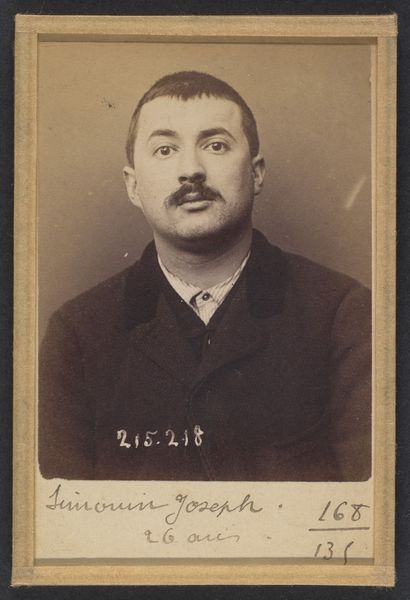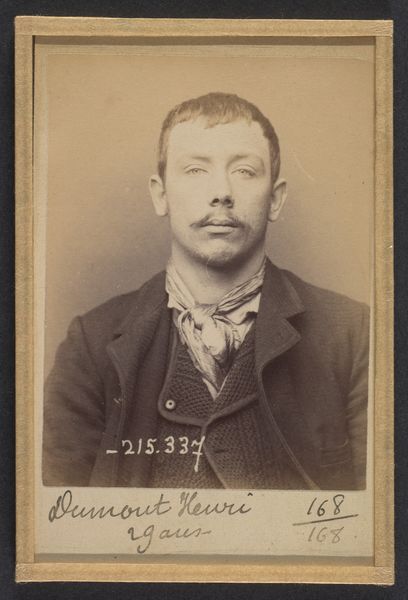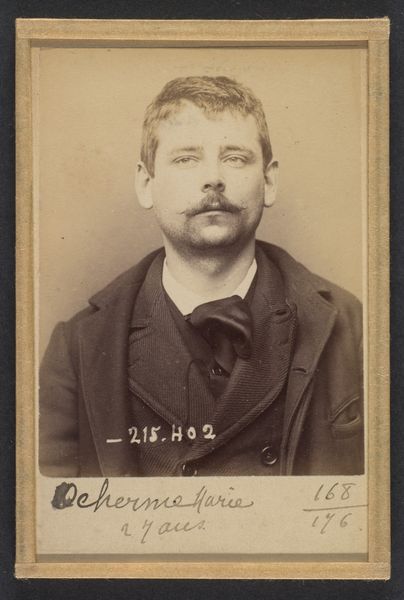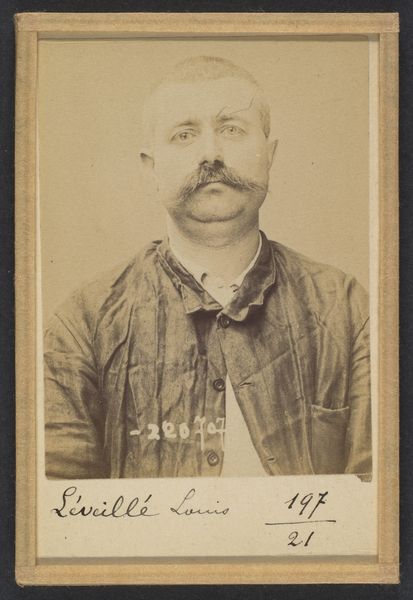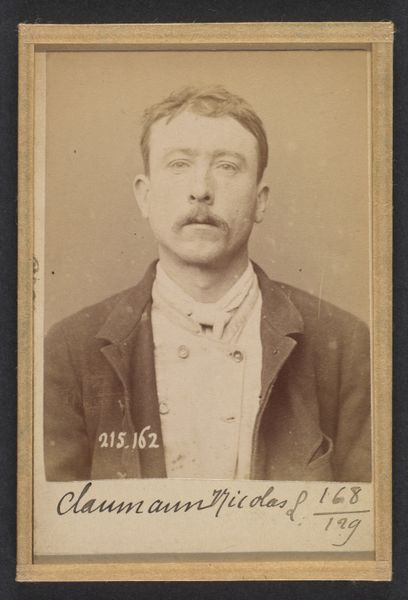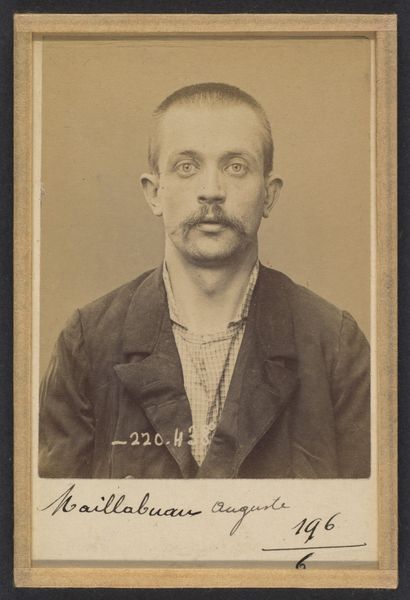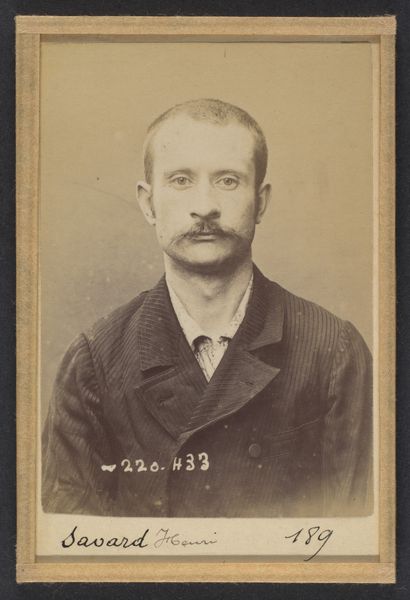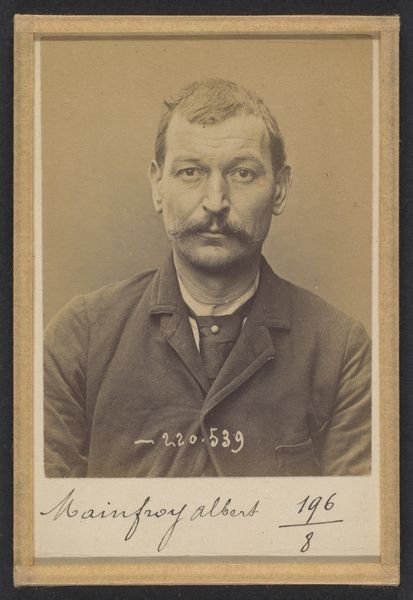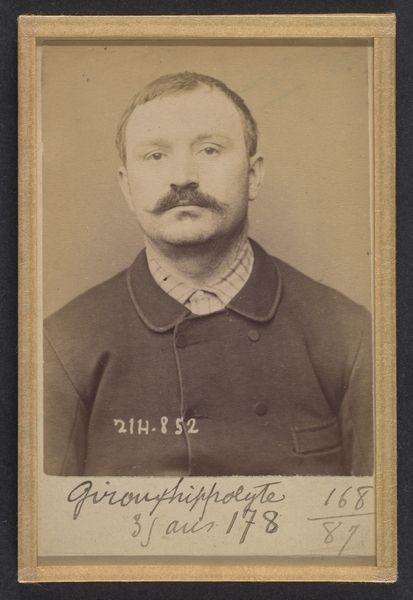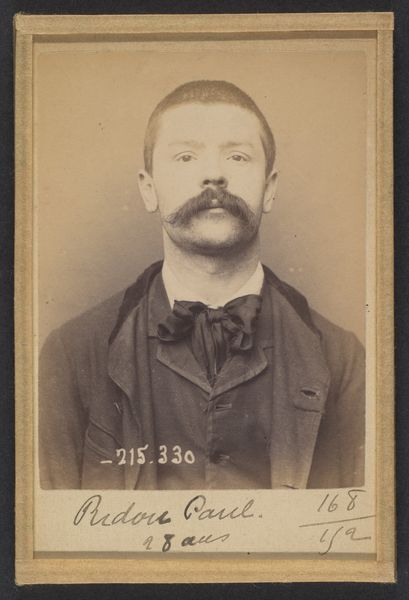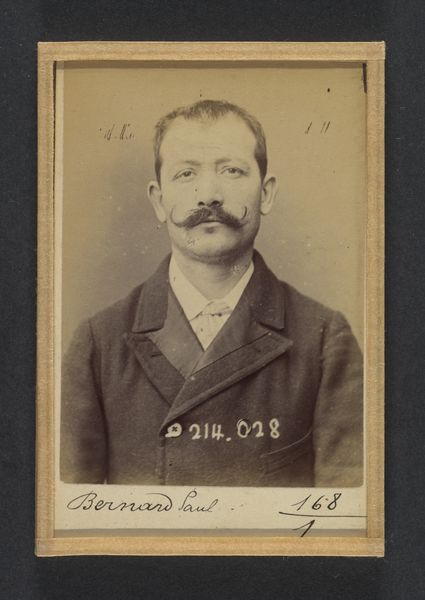
Fournier. Émile, Christophe. 26 ans, né à St-Martial (Creuse). Serrurier. Vol. 13/3/94. 1894
0:00
0:00
photography, albumen-print
#
portrait
#
photography
#
historical photography
#
19th century
#
men
#
albumen-print
#
realism
Dimensions: 10.5 x 7 x 0.5 cm (4 1/8 x 2 3/4 x 3/16 in.) each
Copyright: Public Domain
Curator: Standing before us is an albumen print from 1894 titled "Fournier. Émile, Christophe. 26 ans, né à St-Martial (Creuse). Serrurier. Vol. 13/3/94," attributed to Alphonse Bertillon. Editor: My first impression is the stark, almost unsettling directness of this image. The monochrome palette and the subject's unwavering gaze create a somber mood. Curator: Indeed. Bertillon was a French criminologist who pioneered anthropometry, a system using body measurements to identify criminals. This portrait, then, isn't simply an aesthetic work but a tool of social control, an early form of forensic photography. Editor: Precisely. Viewing it through a critical lens, we see how it intersects with issues of power and surveillance. This is not a celebration of the individual, but rather a visual record created within a system that disproportionately targeted marginalized communities. We should consider the broader social context: rising crime rates, anxieties about urbanization, and the burgeoning field of eugenics. Curator: And from a material perspective, consider the albumen print process itself. It involves coating paper with egg white and silver nitrate, a labor-intensive method. This suggests a state-sponsored infrastructure invested in documenting and processing these individuals, almost industrializing the concept of criminal identity. Editor: Thinking about Fournier himself, we are reminded of his profession listed: a locksmith, a maker of keys and locks. Perhaps we can consider the symbolism in the light of what was taken away from him through criminalization. What was the means of survival during those times? Curator: It’s striking to realize this level of detailed documentation existed at that time, showing an advanced practice of social classification and labor. Even today, we're still grappling with similar issues of surveillance and data collection, so looking back offers critical reflection points about what aspects changed, and which stayed the same. Editor: Absolutely. I see this not just as a historical document, but as a mirror reflecting contemporary anxieties about identity, visibility, and justice. Thanks for giving me an updated perspective on viewing photographs like these.
Comments
No comments
Be the first to comment and join the conversation on the ultimate creative platform.

